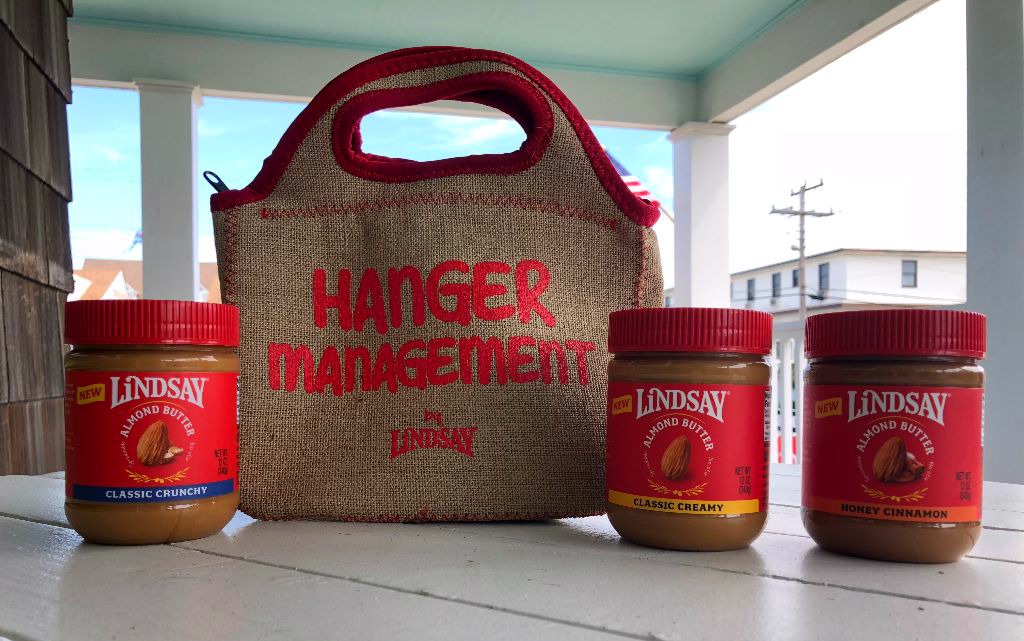Obviously, if you have a peanut allergy, you need alternatives to peanut butter. But even if you don’t, you might want to give almond butter a try! Here’s why.

Look, I love peanut butter as much as the next person, but if you haven’t been checking out the ever-growing number of PB alternatives, you’re missing out.
Heads up: I received this product for free from Moms Meet. Compensation for this post was provided, opinions are my own.
Even though my own kids don’t have a peanut allergy, they often had a student in their class that did. And since PB&J is pretty much a lunchbox gold standard, we’ve tried a ton of the other butters out there over the years to find an allergy-safe substitute. If that’s been your experience too, you’ll be happy to know that not only is almond butter a tasty option, but a better-for-you one too.
The Health Benefits of Almond Butter vs Peanut Butter
Now, clearly what brand of almond butter or peanut butter you’re eating makes a difference, so read those labels before buying. But speaking generally, when you opt for almond butter over peanut butter you get:
More fiber.
Almost twice as much. This is a pretty big detail if you’re trying to lose weight, since that fiber will help you to feel fuller longer.
More good fats, fewer bad fats
Almonds contain more monounsaturated fats (by about 25%) and less saturated fats than peanuts do.
More minerals and vitamin E
Almond butter has more magnesium, iron, phosphorous and calcium than its peanut butter counterpart, as well as vitamin E (which is good for immunity, fighting inflammation, your skin and eyes, and a whole lot more. Make sure you’re getting plenty of vitamin E).
But does it taste good?
I think it does. My most recent foray into almond butter came courtesy of a sampler of Lindsay Almond Butters, as part of a review through the Moms Meet blogger program. This brand is a worthy contender as far as peanut butter impersonators go: it’s smooth and easily spreadable, and tastes very similar to peanut butter—ideal if you have picky eaters who might balk at accepting almond butter on its own terms. It does separate a little, like most butters that keep preservatives, emulsifiers, etc to a minimum do, but not nearly so much as some “natural” peanut butters or PB alternatives can.
It’s made with 100% California almonds and a touch of honey, and once you pair it with jelly on a sandwich, cut apple slices, celery, or whatever your kid’s favorite PB delivery mode might be, I’m not sure they would even notice the difference. Since my favorite is a peanut butter and peanut butter sandwich, I’ve been happily eating my Lindsay almond butters open faced on whole wheat toast, for a little bit of a boost before I go out for a run.
Because I’m running again. Early Spring 2018 me thought it was a good idea to sign up for an October 8K race. September 2018 me isn’t real happy with Early Spring 2018 me.
Anyway. To sweeten the deal, Lindsay Almond Butters have no hydrogenated oils, preservatives, GMOs or gluten, plus they are kosher. You can find them in Classic Creamy, Classic Crunchy, and Honey Cinnamon at a retailer near you; if you have a Costco, Walgreens, Wal-Mart, Sam’s Club or Safeway nearby, those are good places to check. (The crunchy is fantastic, by the way, crunchy PB lovers. I’ve been maybe sneaking a spoonful every now and again, when I just need to eat a little something to calm a rogue hunger pang.)
Lindsay and Sustainability
The Lindsay brand is family owned and operated, growing their almonds on the same land where they’ve cultivated olives for the past 100 years (and holy cow, do they ever have a variety of olives, as well as peppers, olive oil and pickled veggies; if you like any of those things you should really check out their full product lineup and recipe ideas). Since they’re located in California, they’ve made huge efforts when it comes to water conservation, and reuse their by-products and processing water to power the grid—enough to power 1800+ homes/year— and feed the soil. And over the last five years, Lindsay has cut its carbon footprint by a third: pretty impressive.
One more thing
I highly suggest you go follow Lindsay on Instagram and Pinterest. Because yum.
Leave a Reply